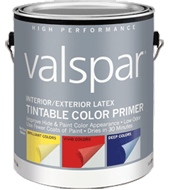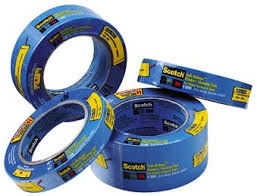Home Improvements? Spring Cleaning? Just want to paint your home?
Are you thinking about painting the inside of your home? Decided to do it yourself and save some money perhaps? Well painting is really a big project to take on yourself and there is so much to do before you even get the brush in your hand.
- What tools will I need to paint?
- Do I have to prime?
- What type of brushes do I need?
- What sheen should I use?
I’ll be able to answer some of your questions so you can confidently start painting your home. Remember though, use the best paint and tools you can afford, have all your tools ready so you don’t have to keep making trips to the paint store, be safe and most of all – have fun and be safe.
So here are some tips I put together for you. This information is based on years of selling and hands on experience and I stand by and recommend every single one of these tips. I believe I covered the basics here but if you have additional questions you can email me and I’ll try to answer as best I can in a timely manner – hopefully when your NOT painting.
Preparation
It’s a good start!
1. Before starting any painting projects in older homes, make sure there is no lead-based paint present.
2. Call the National Lead Information Center if you suspect lead paint in the house.
3. Your paint project depends on how well you’ve prepared your surface.
4. Use the right tools for the job to get best results. Don’t cut corners if you can help it.
5. Make sure the weather conditions are right if you are painting outdoors.
6. Glossy surfaces such as cabinets will have to be lightly sanded before applying paint.
7. Make sure all your painting surfaces are clean.
8. TSP or Tri-sodium Phosphate is a good all-purpose cleaner to use prior to painting.
9. Porous surface? You WILL need to prime.
10. Mildew on the walls? Clean with 3 parts H20 and 1 part bleach prior to painting.
11. Bleach is the only chemical that will kill mildew.
12. A natural bristle brush is made with animal hair.
13. Natural brushes are ideal when using oil based paint.
14. You’ll need paint thinner to clean natural bristle brushes.
15. Synthetic brushes are made from nylon.
16. Use a synthetic brush for latex paint and clean it with water.
17. Paint rollers get the job done quicker but will use up more paint.
18. Rollers are also available in natural and synthetic materials.
19. Use painting pads for tight spots.
20. Pads hold less paint than rollers and brushes.
21. 1″ brush is good to use for trim and detailing.
22. 4″ brush is obviously good for interior walls and large surfaces.
23. Natural brushes are also good for stain, varnish, shellac and urethane.
24. Natural brushes will become floppy if used with latex paint.
25. Synthetic Filament brushes are can be used for both latex and oil paint.
26. A polyester brush can leave brush marks since it’s a bit stiffer.
27. A nylon/poly blend brush is good for interior & exterior painting.
28. Lambswool is another name for the natural fabric on a roller.
29. Natural fabric on a roller resists shedding and leave less lint on the finish.
30. Synthetic fabric rollers can be used on all types of coatings, latex and oil.
31. Better quality brushes provide smoother coverage and holds more paint.
32. 1/4″ rollers are good for ultra-smooth surfaces such as cabinets, and doors.
33. Keep in mind, the smoother the roller surface the shorter the nap.
34. 3/8″ rollers are good for smooth surfaces such as plaster and drywall.
35. 1/2″ rollers are good for lightly textured surfaces such as textured ceilings and concrete.
36. 3/4″ rollers are good for painting brick, decks, fencing and stucco.
37. 1 1/4″ rollers should be used for surfaces that are heavily textured.
38. Surface prep you’ll need: tape, scraper, brushes, putty knife, sandpaper and wire brush.
39. A canvas drop cloth will be better and safer than a plastic one.
 40. A plastic drop cloth is cheaper but will not absorb any spilled paint.
40. A plastic drop cloth is cheaper but will not absorb any spilled paint.
41. Clean a new brush before using it. Same for any new rollers. This will remove dirt and dust.
42. Only dip a brush no more than half way into the paint can.
43. Hold a brush the way you’d hold a pencil for more control.
44. Paint in the direction of wood grain.
45. Hold your brush at a 45 degree angle when painting and work with your wrist, not your arm.
46. Don’t fill a paint tray more than 1/3 full.
47. Load the entire surface of a roller with paint.
48. Paint walls from the top down.
49. Clean all brushes right after use.
50. Use mineral spirits or paint thinner to clean oil paint, varnish and stain on brushes.
51. Use alcohol to clean brushes used for shellac.
52. Remove all artwork, outlets etc. before painting. Lift up chandeliers.
53. Keep you switch plates and hardware in labeled sandwich bags.
54. Remove all the furniture in the room or at least move it to the center.
55. Purchase Sliders© or Moving Men© to make furniture moving easy.
56. Prime your walls if you are painting bare wood, wallboard, concrete or brick.
57. Using drywall primer will reduce the amount of paint needed to complete your project.
58. You can have your primer tinted if you are going to use a dark color.
59. Use a gray primer when using red paint.
60. All-purpose oil primers are designed to maximize paint adhesion when painting glossy surfaces.
61. Oil primers also are good to block stains from ‘bleeding’ types of wood and most stains.
62. I don’t recommend paints that have primer in them. Use a good primer and high-quality paint for best results.
63. There are primers designed just for bare wood, new drywall and concrete. Choose the one you need.
Paint Brands
64. Choose high-quality paint for the best results.
65. Choose a paint that has good “Hide” or coverage.
66. Resist purchasing economy paint. A high-quality paint will have optimum stain resistance.
67. Scrub resistance. This will really separate economy paint from quality paint. Try scrubbing cheap paint and see how many colors will rub off.
68. High-quality paint will hold up well over time from UV, mildew, stains and scrubbing.
69. Economy paints lack adhesion. They contain less binders therefore the paint does not stick to the wall well.
Sheens. Flat? Eggshell? Satin?
70. Flat paint has the best hide capabilities. You won’t see any brush marks when using a flat sheen.
71. Have bumpy walls? Use flat paint to hide those imperfections.
72. Flat paint is difficult to clean.
73. No kids or pets? You got it – flat paint will be a good choice.
74. Formal room? Flat paint will look super classy.
75. Use ceiling paint for ceilings not flat paint.
76. Don’t use color-changing paint (purple when wet) in the bathroom. It will reactivate from the humidity.
77. Flat enamel. Similar qualities that flat has but has better cleaning capabilities.
78. Eggshell sheen has more stain resistance and a slight sheen.
79. Eggshell is a popular choice for bedrooms, kitchens and dining rooms.
80. You will be able to see touch up marks when using eggshell sheen.
81. You will start to notice nail pops and wall imperfections when using eggshell or paint with any luster.
82. Paints that have a satin sheen have good stain resistance.
83. Satin is a good choice for kids rooms and bathrooms since it cleans well.
84. With a medium sheen, semi-gloss offers excellent stain resistance.
85. Gloss is high in sheen and has great ease of stain removal and durability.
Tapes
86. Have a delicate surface? Use a low adhesion painters tape.
87. Use a multi-surface painters tape to use on trim work to most paintable surfaces.
88. Masking tape should only be used on tougher surfaces such as stucco, brick, rough wood and concrete.
89. There are paints formulated for just the bathroom. They prevent mold and mildew from growing.
90. Myth: You can’t apply oil primer over latex paint.
91. Oil primers have better stain blocking properties than latex primers.
92. Need to paint over wallpaper? Use an oil base primer. I like Kilz products.
93. Cleaning tip: Turpentine will clean oil paint, varnishes and enamels.
94. Use Mineral spirits to clean your brushes after using oils, varnishes and enamels.
95. Use lacquer thinner when using lacquer based products only.
97. Make a list of all the materials you need prior to painting.
98. Calculate the amount of paint you need for your project. It’s better to have little extra for touch ups.
99. Choose your color scheme in your home where the lighting is key.
100. Not sure of your color choices? Paint samples on boards, not on the walls, to see how it’ll look.












Pingback: The Best Top 100 Painting Tips Ever Written | HomeCentrl
You are welcome. Feel free to delete my comment. No need in the world knowing. 🙂
Yes! Thanks for the catch – I fixed it.
Great tips! So much information. I’m pinning now to read and implement later. Thanks!
Did you mean ‘roller’ for items #34 – #37?